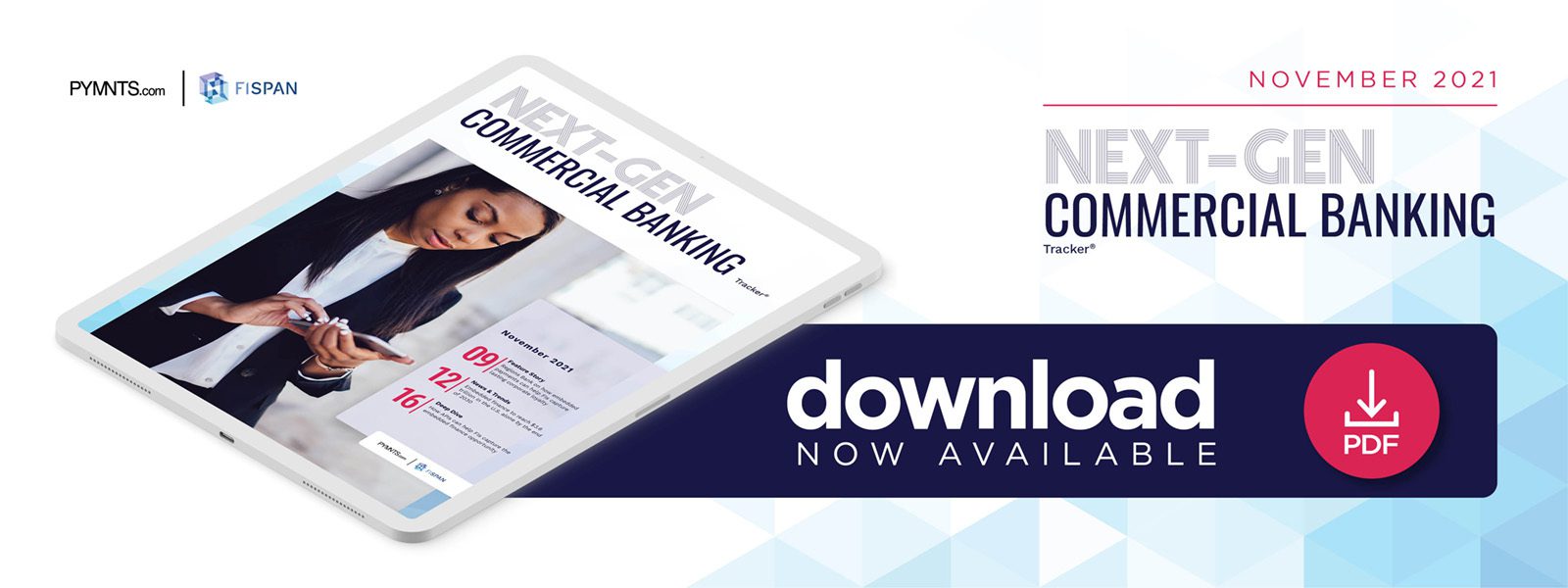Regions Bank on How Embedded Payments Can Help FIs Capture Lasting Corporate Loyalty

Consumers’ positive experiences with new digital payment methods have them craving the same convenience for their businesses, and savvy banks are taking notice. In the Next-Gen Commercial Banking Tracker, Tim Mills, senior vice president of Emerging Payments at Regions Bank, explains how investing in embedded and real-time payments is helping banks cater to the evolving needs of corporate clients.
Businesses have prioritized digitizing their outdated and friction-laden processes during the past two years to keep up with the changing demands of an increasingly virtual workforce and customer base.
Digitization has firms reexamining the tools and solutions they use for everything from interacting with suppliers to conducting routine payments. This has put pressure on their financial institutions (FIs) to keep up, said Tim Mills, senior vice president of Emerging Payments for Regions Bank; Jeff Taylor, senior vice president of Treasury Management; and Greg Miles, senior vice president of Treasury Management Products and Services for the FI.
“[Businesses] no longer assume they’ll have the ability to physically interact with all of their strategic partners, customers or even their own employees in the same ways they did before,” Mills explained in an interview with PYMNTS. “More than half of the broader workforce now works remotely at least part of the time, and the demand for services delivered via online channels has experienced significant growth [during] the last 12 months. As a result, businesses are focusing on leveraging automation to increase efficiency and decrease costs and reliance on the need for manual processes.”
Mills said that businesses examining the benefits of emerging technologies such as embedded finance — which uses application programming interfaces (APIs) or other tools to seamlessly integrate payments into businesses’ sites or digital platforms — are also reevaluating their relationships with their FIs and strategic partners. This shift means banks have innumerable opportunities to meet businesses’ shifting payment needs, especially if they can provide access to emerging, seamless digital tools.
Keeping Pace With Shifting Business Needs
Even companies that were reticent to overhaul their outdated payments infrastructures have reconsidered their stances during the health crisis, and FIs are now scrambling to keep pace. Banks are working swiftly to meet businesses’ needs for seamless digital-first payments and financial support, Miles explained, which makes standing out from the financial pack more challenging than ever.
“Banks of all sizes are raising their game with respect to payment and data services that work seamlessly with [enterprise resource planning (ERP)] platforms,” Miles said. “The only effective way to compete in this environment is to meet clients’ data needs and couple that with first-class human service, whether online, by phone or socially distanced while in person.”
FIs must continue investing in emerging technologies that can enhance their business offerings, including real-time payments and embedded finance solutions. This investment can help banks not only support the success of their business clients, but also create “long-term relevancy” for their own organizations, Mills said.
“Embedded payments are becoming table stakes as they drive the customer experience,” he said. “Regions is actively investing in our digital capabilities, which serve as a springboard for embedded payments.”
Prepping for the Embedded Payments Era
Embedded finance experiences are relatively nascent within the corporate banking space, although the growing availability of real-time payments and other emerging financial solutions drives greater interest in such solutions. FIs must carefully monitor how businesses’ financial and payment expectations surrounding embedded payments will change in the next few years, Taylor said, even though embedded payments are currently considered more of a consumer-facing tool.
“While embedded payments are considered to primarily impact the consumer channel, consumer experiences influence commercial expectations,” Taylor said. “As a result, continued evaluation and strategic thinking around all these ideas are important for future growth and client satisfaction.”
Carving out room for embedded payments within the corporate banking space could make FIs more attractive prospects for the businesses seeking out faster and more connected banking experiences. For FIs to succeed in the growing digital world, they must support the transparent digital payment capabilities businesses now expect.
